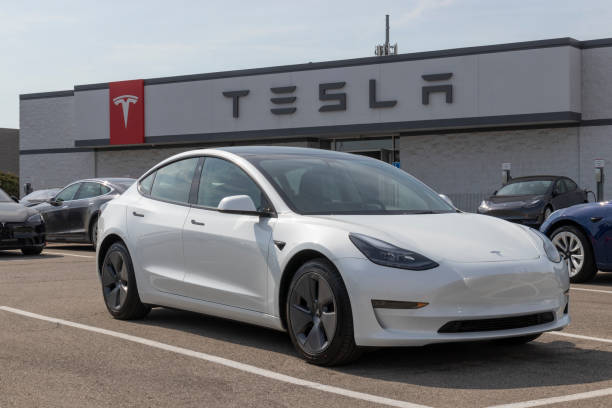In a groundbreaking announcement that has electrified the automotive world, Tesla unveiled its new 4680 battery cells, promising to revolutionize electric vehicle (EV) range and performance. As the world accelerates toward sustainable living, these innovative cells are set to redefine our driving experience. Tesla’s 4680 battery cells are not just a technological leap; they represent a pivotal moment in our transition to cleaner energy. In this article, we’ll delve into how these cells work, their impact on EV range, and what this means for the future of electric mobility.
Understanding Tesla’s 4680 Battery Technology
What Are 4680 Battery Cells?
Tesla’s 4680 battery cells derive their name from their dimensions—46mm in diameter and 80mm in height. This new form factor is a departure from the traditional 2170 cells used in models like the Tesla Model 3 and Model Y. By increasing the size, Tesla has managed to pack more energy into each cell, thereby enhancing the overall energy density and efficiency.
Key Features of the 4680 Cells
- Increased Energy Density: The larger size allows for more active material within each cell, boosting energy capacity.
- Improved Thermal Management: The tabless design reduces heat generation and improves safety.
- Faster Production: Simplified manufacturing processes lead to lower costs and faster production times.
According to Electrek, these advancements are expected to increase range by up to 16% without increasing vehicle weight, a game-changer for the EV industry.
The Impact on Electric Vehicle Range
How 4680 Cells Boost EV Range
The primary advantage of the 4680 battery cells is their potential to significantly extend the range of electric vehicles. Here’s how they make it possible:
- Higher Energy Storage: Each 4680 cell can store more energy, directly translating to longer driving distances.
- Enhanced Efficiency: The tabless design reduces electrical resistance, improving overall energy efficiency.
- Weight Reduction: The integration of structural battery packs reduces the need for additional materials, making vehicles lighter.
CleanTechnica reports that these improvements could push Tesla’s range limits beyond 600 miles on a single charge, setting a new benchmark for the industry.
Real-World Applications and Benefits
- Long-Distance Travel: With extended range, EV owners can embark on longer journeys without frequent charging stops.
- Cost Savings: Increased efficiency means lower energy consumption, reducing operating costs.
- Environmental Impact: Higher energy density results in fewer resources needed per kilometer traveled, decreasing the carbon footprint of EV manufacturing.
Practical Considerations: Charging and Availability
How to Charge with 4680 Cells
Charging infrastructure is a critical component of the EV ecosystem. Here’s what you need to know about charging vehicles equipped with 4680 cells:
- Faster Charging Times: Thanks to improved thermal management, 4680 cells can handle higher charging rates, reducing time spent at charging stations.
- Supercharger Network: Tesla continues to expand its Supercharger network, ensuring that drivers can access fast charging conveniently.
- Home Charging: With the right setup, home charging remains a viable option, providing overnight replenishment for daily commutes.
Where and When to Buy
Tesla plans to roll out vehicles equipped with 4680 cells in models like the Model Y and the upcoming Cybertruck. While availability may initially be limited, production is expected to scale rapidly in the coming years.
- Early Access: Tesla’s Gigafactory in Texas and Berlin are spearheading production, with deliveries anticipated to begin soon.
- Global Reach: As production ramps up, expect wider availability across international markets.
AutoCar suggests that keeping an eye on Tesla’s announcements and pre-order opportunities is the best way to secure access to these cutting-edge vehicles.
The Future of EVs with 4680 Technology
Key Takeaways
- Extended Range: Tesla’s 4680 cells promise to push the boundaries of how far an EV can travel on a single charge.
- Economic and Environmental Benefits: Increased efficiency and reduced materials usage contribute to cost savings and sustainability.
- Widespread Adoption: As production scales, the 4680 cells could become the standard for future EV models.
Looking Ahead
Tesla’s 4680 battery cells are not just a technological innovation; they are a beacon of what’s possible in the journey toward sustainable transportation. As more automakers explore similar advancements, the entire industry stands to benefit. Imagine a world where range anxiety is a thing of the past, and electric vehicles are the norm, not the exception.
What are your thoughts on Tesla’s new 4680 cells? Are you excited to see how they reshape the EV landscape? Share your opinions in the comments below, and stay tuned as we continue to follow this electrifying story. The future of electric mobility is here, and it looks brighter than ever.

